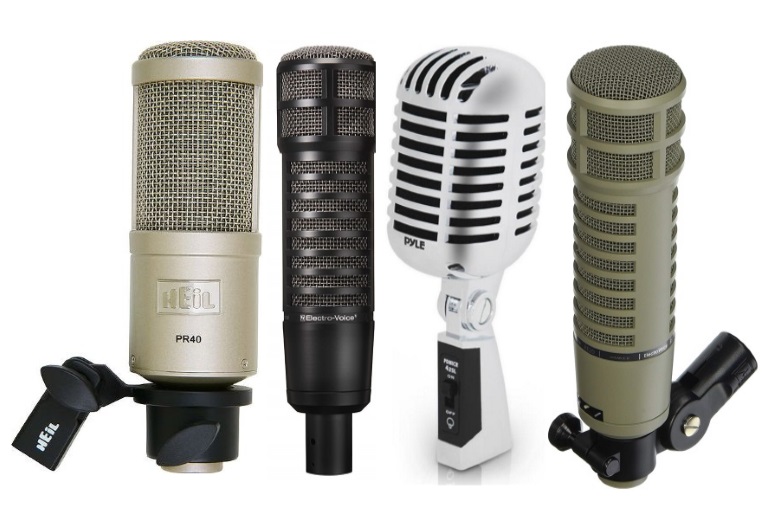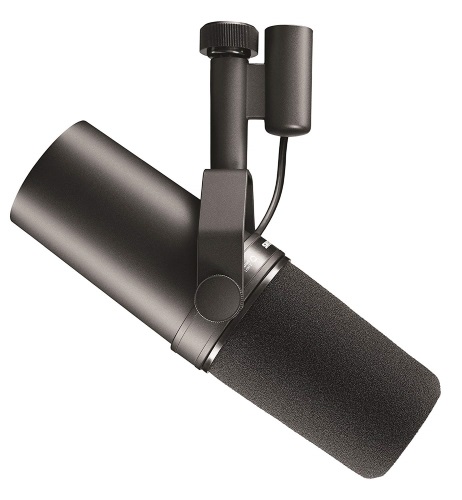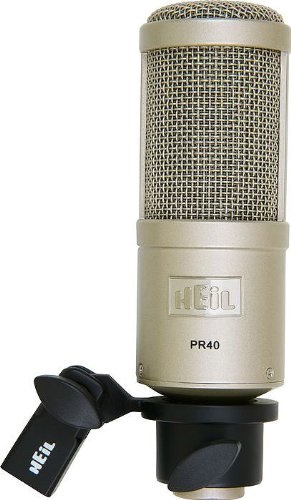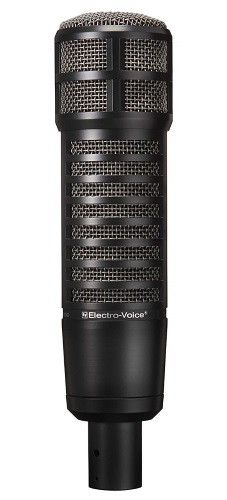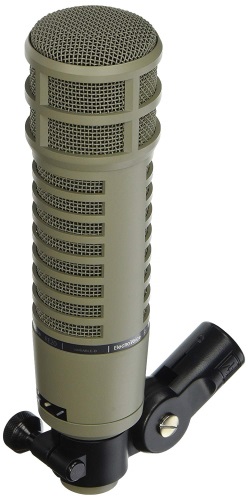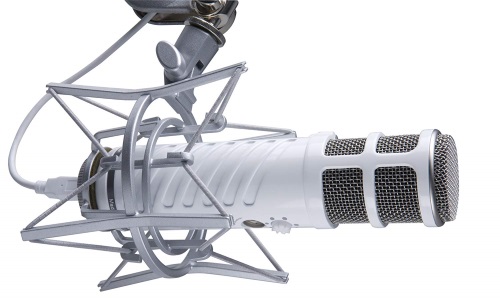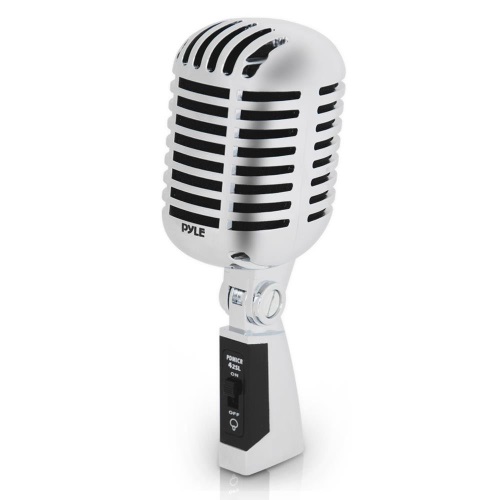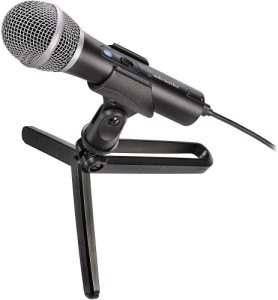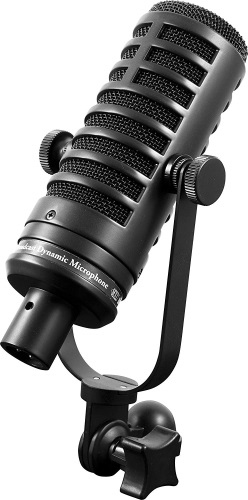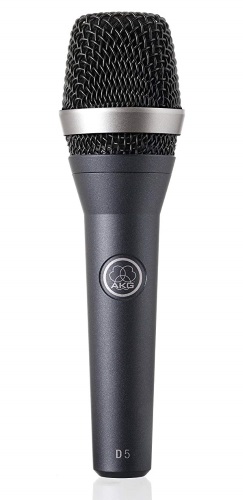For podcasters, content is king. The audio quality of the content is also very important. Contrary to what some people think, listeners pay attention to the audio quality of podcasts and when it is nothing to write home about, they may have reservation about turning in next time. To record top quality content for podcasting, it is important that content creators invest in top-quality microphones.
In this article, we’ve researched extensively to put together 10 of the very best Dynamic microphones for podcasting. Check our comprehensive list below.
Top 10 Best Dynamic Microphones
1. Shure SM7B
Coming from one of the most trusted manufacturers, this is one of the best dynamic microphones in the market. This popular microphone is also highly rated by podcasters and other users who find it incredibly helpful in all professional audio applications. It has a flat, wide-range frequency response that is perfect for podcasting. With this microphone comes improved rejection of electromagnetic hum generated by computer monitors, neon lights and other electronic devices.
The Shure SM7B Cardioid Dynamic microphone has been around for long but what you have today is an improved model that delivers excellent sonic experience when used in all kinds of recording environments. The classic cardioid polar pattern is just what you need for maximum rejection and minimum coloration of off-axis sound. It also comes with a highly effective pop filter to keep the sounds smooth. Currently, it is also shipped with the A7WS detachable windscreen that can effectively reduce plosive sounds and give warmer tone for close-talk vocals. It also boast of rugged construction for durability.
2. Heil PR-40
Though this is specially called a studio-recording microphone, it is also perfect as a podcasting microphone. In fact, it represent a new dynamic microphone technology designed for a wide range of professional applications. It will certainly make your podcasts fantastic on a consistent basis. The frequency response is 28 Hz to 18 kHz, which is okay for sophisticated recording, live sound, and commercial podcasting.
The Heil PR-40 Dynamic microphone maintains the 25 year Heil Sound tradition of superbly natural voice articulation. If you get in contact with anyone that uses this mic for podcasting, they are always willing to swear that it is the best dynamic mic for podcasting. Coming from Heil, a leader in high quality audio gear, this is a reliable mic. It is well built with steel body and zinc die-cast bottom ring. For a microphone that offers so much in terms of quality and performance, it is a bargain item at the price it is sold.
3. Electro-Voice RE320
This is a broadcast-standard dynamic microphone that comes with lots of impressive features. The variable-D pattern control is a standout feature that minimizes positional and off-axis tonal shifts. It is one of many other features that ensures that the mic performs excellently during recording and sound reinforcement applications that require extremely low noise like in podcasting. The integrated humbucking coil and integral pop filters help to guarantee noiseless performance. While breaking new grounds in the studio and live performance microphone world, this microphone also fulfills the dream of podcasters that crave for top quality audio contents.
Electro-Voice Broadcast microphones have a long-lasting legacy of outstanding performance and reliability. The ER320 is not an exception at all. It reality, it offers more than many mics of similar grade due to some special features. The unique dual-voicing switch selects from two response curves. The build-quality is top-notch too.
4. Electro-Voice RE-20
This professional-quality dynamic cardioid microphone has been around for a very long time and remains one of the very best audio gears in terms of quality and performance. While it is great for all kinds of vocal inputs, it is most ideal for speech broadcast. This is why it has become very popular among podcasters. It is specifically built to handle noise with several features. There is a heavy-duty internal pop filter that reduces proximity effects; internal element shock mount that reduces vibration-induced noise; and blast & wind filters that cover each acoustic opening. All these work to ensure that you get rich and clear sound.
The Electro-Voice RE-20 Cardioid Microphone has a voice-tailored frequency response of 45 Hz – 18 kHz. It also comes with a true cardioid at 180-degrees off-axis. The microphone also uses variable-D to prevent positional sound issues such as gain difference. In terms of build quality, you can always trust Electro-Voice to come true. This microphone is superb all-round.
5. Rode Podcaster
This is a modern dynamic microphone that combines broadcast quality audio with the simplicity of USB connectivity to make podcasting a lot easier for beginners and pros. As the name implies, this is a new-generation microphone that is specifically designed for podcasting, with voice clarity and direct digital connectivity actualized in the simple design. It is also compatible with Windows and Mac OS X computers, as well as Linux systems.
While the cardioid polar system helps to minimize noise, there are extra features that makes sure that your broadcasts are as clear as possible. There is an internal pop filter to minimize sounds that overload and distort, as well as internal shock mounting of microphone capsule for low handling noise. Though this microphone is specifically made for podcasting, it can also be used by musicians and songwriters that need the convenience of USB microphone but don’t want to compromise sound quality. The podcaster microphone also comes with Rode RM2 Ring-Mount Microphone Stand and USB Cable for connectivity.
6. Pyle Classic Retro
This retro-style dynamic microphone might have been designed with musicians in mind but it is the real deal for podcasting. It can deliver the unique old-school flavor that listeners enjoy though it is built based on today’s modern audio reproduction technology. It has an impressive frequency response of 30 Hz – 15 kHz, dynamic moving coil elements, and adjustable self-tensioning swivel mounts for great audio performance in different environments.
A cardioid polar dynamic microphone, the Pyle Classic Retro microphone ensures that you obtain noiseless podcasting consistently. The great internal cartridge shock mount, self-tensioning swivel all help to ensure voice clarification. If you are really on a budget and want a fair bargain, then this is your mic. It is quite affordable. The build quality is also superb (rugged construction and steel mesh grill) so you don’t have nothing to worry about.
7. Audio-Technica ATR2100x
This is a simple dynamic microphone that can be the perfect starting gear for someone that is just getting into podcasting. It will also be a good addition for veteran podcasters who want something simple yet versatile. This is a rugged handheld microphone with two outputs – USB output for digital recording and XLR output for connection with sound systems. It has a smooth, extended frequency response that is perfect for podcasting, home studio recording, voiceover, and other audio applications.
The ATR2100x has a cardioid polar pattern that ensures that background noises are cut-off during podcasting. It offers quality analog-to-digital converter for excellent fidelity and a headphone output level control helps in monitoring to ensure that you are getting the right sound during live podcasting. The microphone has a rugged construction. Audio-Technica is well-known for their top quality products and you can be sure that this will be durable. This is also a highly affordable podcasting microphone.
8. MXL BCD-1
If you want something that is not from the biggest brands then this is something for you. MXL rivals the big industry players in terms of quality microphones and this is one of their best mics for podcasting. It is also great for recording and live performance, so you have yourself a flexible microphone if you get your hands on it. With a frequency response of 40 Hz – 15 kHz, you won’t have problems with live broadcast/ radio.
The MXL BCD-1 is a cardioid microphone that can isolate main sound source excellently and reject background and side noises. It features a tuned grill that eliminates internal reflection and built-in shock mount that prevents unwanted noise. In all standards, the BCD-1 is an impressive dynamic microphone. The manufacturers did a lot to make it great. The package also comes with a case and foam to help you protect the mic and care for it.
9. Sennheiser MD 421 II
It is impossible to talk about the most recognized vocal microphones in the world without mentioning Sennheiser’s MD 421 II. This truly versatile dynamic microphone holds its place among the very best audio gears in the market and will make a great podcasting mic. It has a very flat frequency response (30 Hz – 17 kHz) and lots of incredible features to deliver superior sonic performance in all occasions. It has been around for decades and remains a favorite.
The MD 421 II has cardioid polar pattern which is highly effective in attenuating off-axis noise in any environment for effective feedback rejection and clear sound reproduction. There is also the 5-position low frequency roll-off switch that offers flexible bass attenuation to make the microphone adaptable to different environment. This is a highly versatile microphone and its sturdy construction guarantees durability.
10. AKG D5
This is a handheld dynamic microphone that was undoubtedly made for lead and backup vocals. Since it has an impressive frequency range of 50 Hz – 15 kHz, it is considered ideal for other audio applications. It can deliver powerful clear sound even in very noise environment. When you use it for podcasting, it can deliver crisp sound on a consistent basis.
The AKD D5 makes use of super-cardioid polar pattern for high gain before feedback: which is perfect for sound isolation. The new Laminated Varimotion diaphragm deep-drawing process allows the patented diaphragm itself to be tuned, so that you don’t need any other tuning resonator. This guarantees a quantum leap in audio performance. AKG is a reputable manufacturer and the D5 has a rugged construction. You can, therefore, trust this mic to be durable.
Buying Guide
What Is A Dynamic Microphone?
A dynamic microphone is a receiver that converts audio signals to electrical signals through electromagnetism. It is primarily composed of a diaphragm, a magnet, and a voice coil wrapped around it. When the dynamic microphone receives sound signal from a close source, the sound wave sets the diaphragm into vibration and the coil around the magnet will move to create an electric current that is transported through the cables to the mixing console for amplification and recording.
Dynamic and Condenser Microphones
Before we go into more details why dynamic microphones are the right choice for podcasting, it is important that you understand the difference between a dynamic microphone and a condenser microphone. Indeed both microphones can be used for recording, which entails converting sound waves to electrical energy and digital sound. The method they use in achieving this conversion is what differentiates condenser and dynamic microphones.
While dynamic microphones depends on a magnet behind the diaphragm, condenser microphones depend on a rigid, charged backplate to convert the sound wave to electrical current that can be amplified as a digital sound.
Asides from how they convert sound signals, there are some other differences between dynamic and condenser microphones. They differ in terms of power supply, sensitivity, robustness, and more. We will make more comparisons as we discuss the major reasons to choose dynamic microphones for podcasting.
Why Dynamic Microphones Are Considered the Best for Podcasting
Most podcasters use dynamic microphones and there are good reasons for that. In terms of build, efficiency and performance, they are the best right microphones for podcasting and we will summarize some of the most notable reasons for this below:
They do not require extra power source
Another distinguishing factor between dynamic microphones and condenser microphones is their power requirements. While most condenser microphones require additional DC polarizing voltage called ‘phantom power’ to function, dynamic microphones do not need such extra power. The implication of this is that they will save cost on the long run and let you podcast with fewer set-up procedures.
They are not overly sensitive
One key area where condenser microphones perform excellently is in sensitivity. While this is a wonderful thing for recording vocals in controlled environment, it is not good for podcasting. Unless you are going to use your microphone in recording studios where noise is highly controlled, a condenser microphone is not the right option for you as it can pick so much background noise. It is possible to reduce the sensitivity of some condenser microphones but it will affect the volume significantly.
Dynamic microphones are not as sensitive as their condenser counterparts. This means they are ideal for recording in most environment. The microphones are capable of cutting out background noises on their own, ensuring that the audio quality of your podcast are top-notch. Even though they may not totally eliminate background noises, they will minimize them considerably in environment that are not sound-proof.
They are mostly robust
Dynamic microphones are always a lot more robust than condenser microphones. This makes them more suitable for all kinds of environment unlike condenser microphones that are better off as studio recording microphones. Condenser microphones can be damaged even by too much sound pressure. This is why they are not considered ideal for outdoor live performances. With your dynamic mic, however, you can record in harsh environment. Due to their rigidity, they can serve you for years even when you use them for indoor podcasting and outdoor shows.
They generally cost less
Though there are dynamic microphones that are quite expensive, they are generally cheaper than condenser microphone. When you have a condenser microphone and a dynamic microphone of similar quality, the dynamic type will be significantly cheaper.
Dynamic Microphone Buyer’s Guide
If you have finally decided to buy dynamic microphone for podcasting, you have only made one step towards choosing the right mic. There are lots of dynamic microphones from different manufacturers and you will definitely find it difficult to choose one. If you do not know much about microphones and how they work, it will be very challenging to pick one. Even if you know much about dynamic microphones, going through the number of available items on the market will take too much time.
Here, we have done a bulk of the research you will need to do in order to choose a right dynamic microphone for podcasting.
Factors to Consider While Choosing a Dynamic Microphone for Podcasting
Though we will review some of the best dynamic microphones for podcasting here, it is still important that you understand some of the factors you need to consider before picking any of them.
Polar Pattern
Polar pattern refers to the directional capability of the microphone. This defines how the microphone picks sounds from any direction. While some microphones can pick sound from all directions (omnidirectional microphones), others pick sounds from only one direction (cardioid microphones). Other types of microphones, according to directional capability, are bi-directional, stereo, and figure-of-eight. Depending on how you want to use your microphone, you should consider this.
Most dynamic microphones have cardioid polar pattern. This means that they pick sound only from the front side of the mic. This contributes to making sure that noises are eliminated since sounds coming from directions other than the front side are ignored. Some dynamic microphones do not have other polar patterns but since they are not overly sensitive, they can still work excellently in environments that are not sound-proof.
Flexibility
If you are looking for a microphone that you can use exclusively for podcasting, then you may not consider flexibility as an important factor. It is important, however, that you buy microphones that are flexible. There may be need to use your mic for other purposes and it needs to be ready for such other purposes. Flexibility in microphone is majorly influenced by range of frequencies. If you have a dynamic microphone that can pick up a wide range of frequencies, then you can use it for purposes other than podcasting. This is what flexibility entails.
There are other factors that can also influence flexibility such as the robustness of the microphone and how well it handles sound pressure. If you have a rigid microphone that can be used in tough environment and can handle high sound pressure, then you can consider it as a flexible microphone.
Durability
Durability is majorly determined by the build-quality of a microphone. You need a durable microphone for podcasting so that you don’t come back to the market in no distant time to search for new mic. A durable mic should also be able to handle frequencies and loud sounds without getting damaged.
Dynamic microphones are expected to be durable due to the way they are designed and the way they work. You will need to consider the build quality and the warranty from the manufacturers if you want a durable microphone. It doesn’t matter if you handle your microphones with care or you don’t. Ensure you buy durable microphones.
Price
Your budget will have a huge influence on the dynamic microphone you will get. Great microphones are not cheap and cheap microphones are not always great. This does not imply that you should go for the most expensive dynamic microphones on the market. You should be able to draw the line between cheap and affordable microphones. When you are going for the premium brands, ensure that the microphone is what the price you are paying for it in terms of quality and class.
Manufacturer
It is also important that you consider the manufacturers of any item you are buying. You will be on the save side if you purchase an item manufactured by a well-known company. This does not mean that some new entrants in the industry or less known brands do not produce good quality dynamic microphones, it is safer when you buy from a reliable brand.
Final thought
There are certainly multitudes of dynamic microphones on the market but not all of them are ideal for podcasting. Here we have reviewed the very best options in the market at the moment. There is also a part of the article that will guide you on how to make the right decision about which one will serve you best. Links are also provided for you to get them directly. Consider the reviewed products carefully and order with the confidence.

